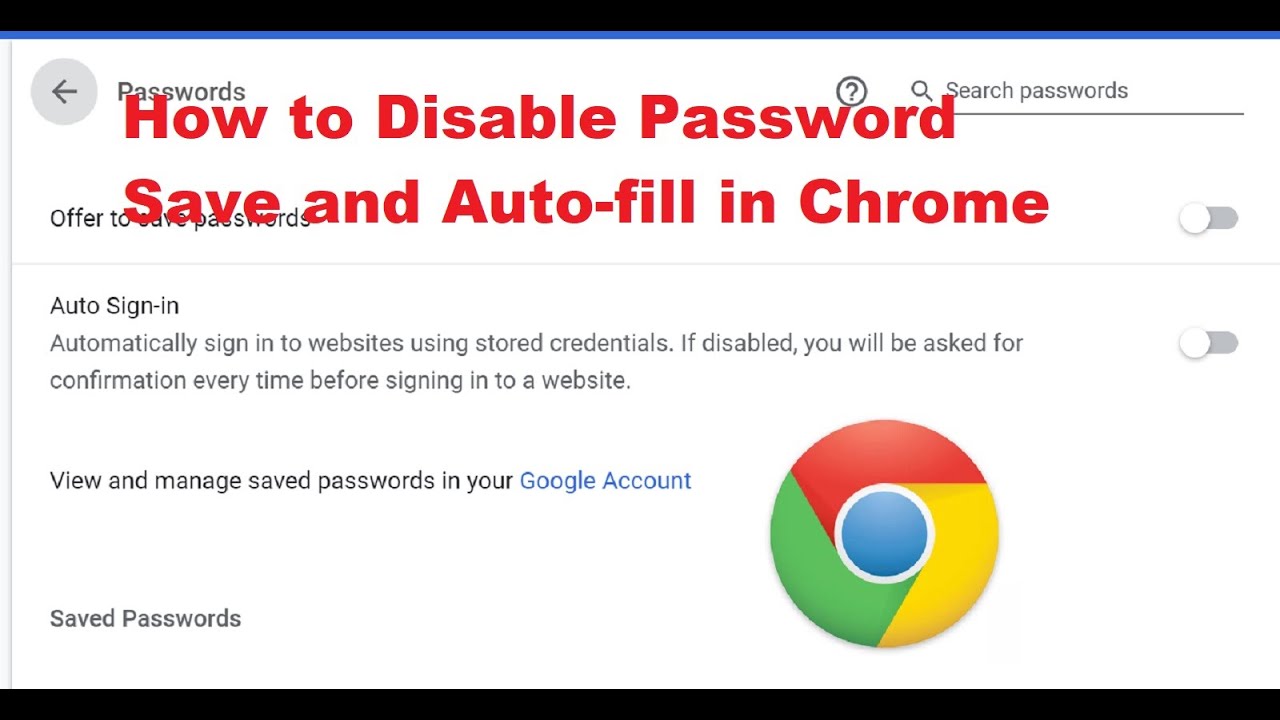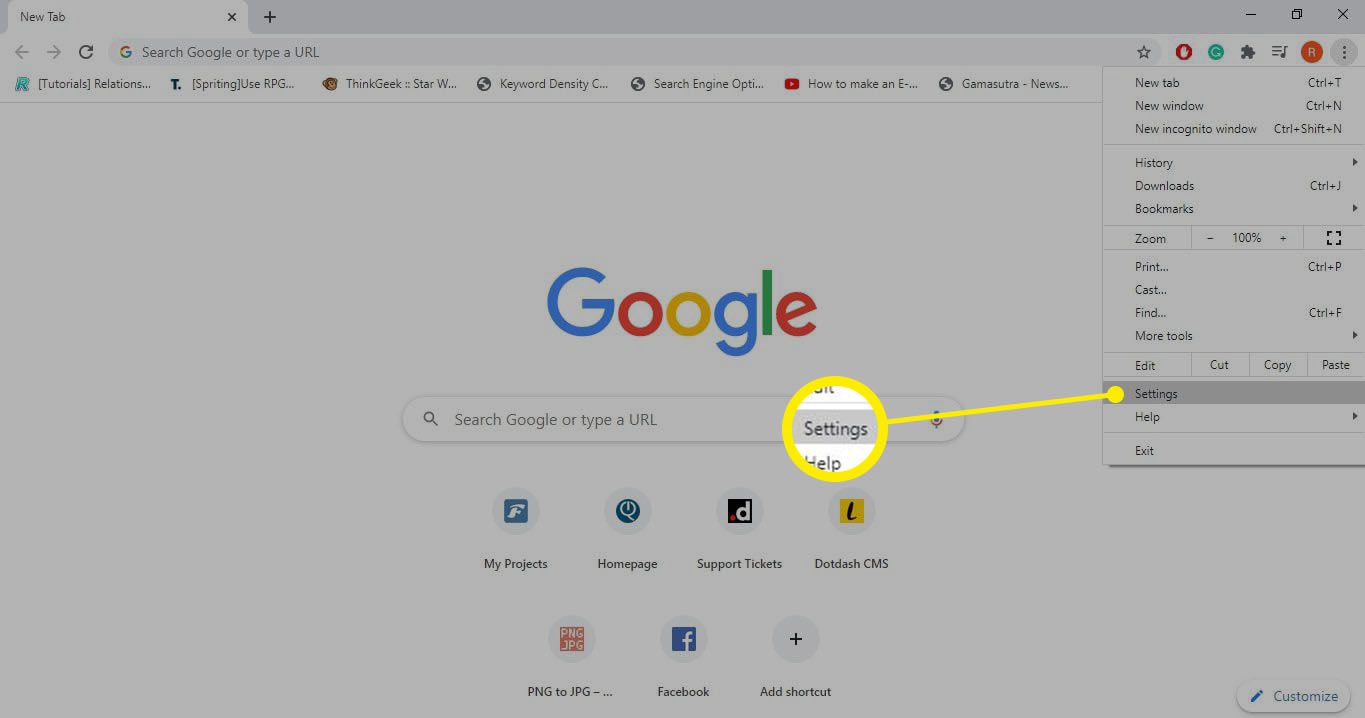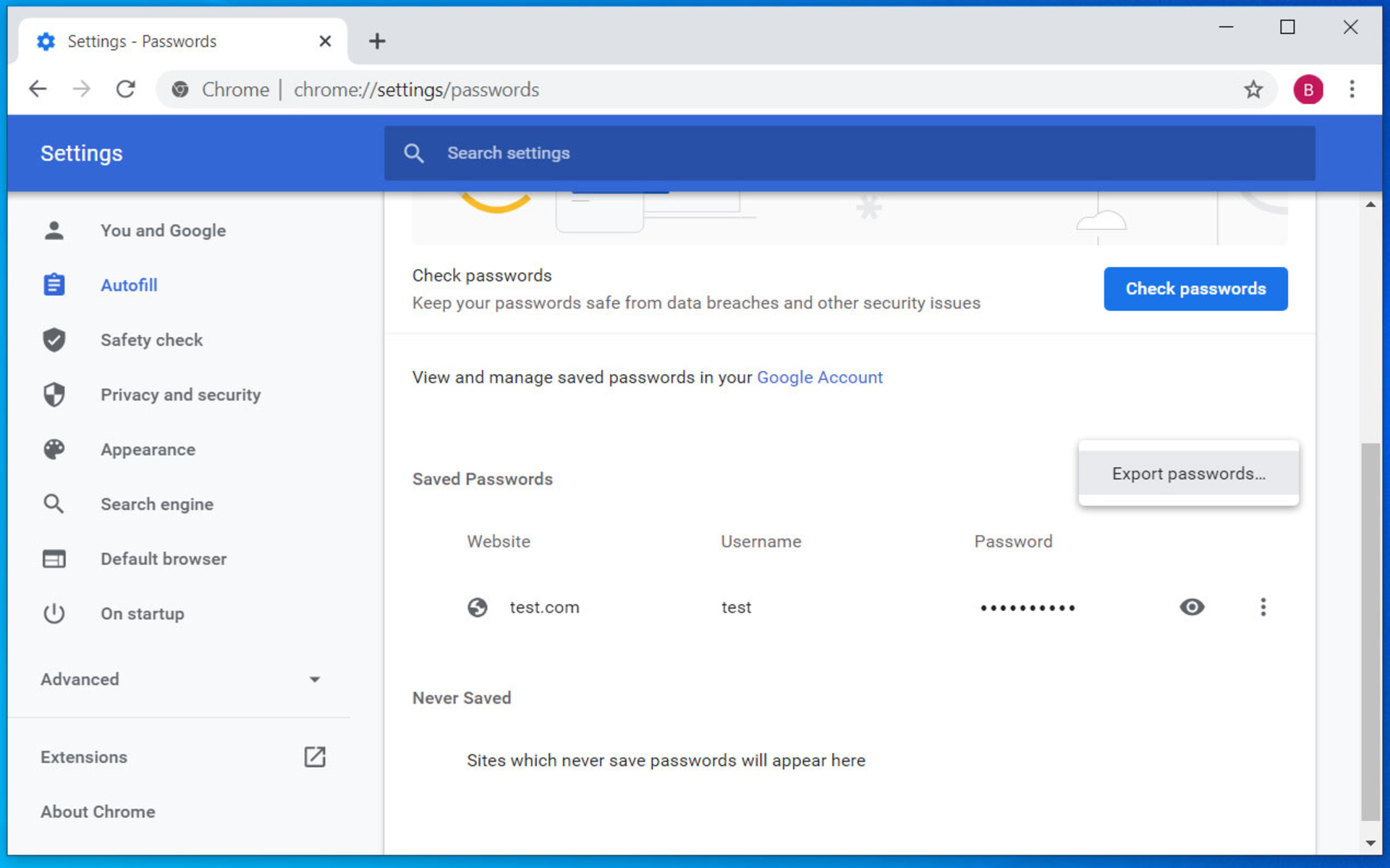Introduction
When it comes to browsing the web, Google Chrome stands out as one of the most popular and user-friendly web browsers. Its intuitive interface and robust features make it a go-to choice for millions of users worldwide. One such feature that enhances user experience is the option to save passwords for various websites, eliminating the need to repeatedly enter login credentials. While this feature offers convenience, some users may prefer not to have their passwords saved for security or privacy reasons.
In this article, we will explore how to turn off the "Save Password" feature on Google Chrome. Whether you're using a shared computer, prioritizing security, or simply prefer to enter your passwords manually, disabling this feature is a straightforward process. We'll walk through three methods to achieve this, catering to different preferences and browsing habits.
By the end of this guide, you'll have the knowledge and tools to customize your Chrome browsing experience according to your preferences. Whether you opt to adjust settings within Chrome, utilize the Incognito mode, or leverage a password manager extension, you'll be empowered to take control of your browsing privacy and security. Let's dive into the methods and explore how to turn off the "Save Password" feature on Chrome.
Method 1: Using Chrome Settings
Google Chrome provides a straightforward method to manage the "Save Password" feature through its settings. By accessing the browser's settings, users can easily disable the automatic password-saving functionality. Here's a step-by-step guide to turning off this feature:
-
Accessing Chrome Settings: To begin, open Google Chrome on your computer. In the top-right corner of the browser window, click on the three vertical dots to open the Chrome menu. From the menu, select "Settings" to access the browser's settings panel.
-
Navigating to Passwords: Within the Settings panel, scroll down and click on "Passwords" under the "Autofill" section. This will direct you to the Passwords settings, where you can manage the password-saving feature.
-
Disabling Password Saving: Once in the Passwords settings, you'll find the option to toggle off "Offer to save passwords." By turning off this setting, Chrome will no longer prompt you to save passwords when you log in to websites.
-
Managing Saved Passwords: Additionally, within the Passwords settings, you can review and delete any previously saved passwords. This allows you to maintain control over your stored credentials and remove any passwords that you no longer wish to be saved by Chrome.
-
Confirmation: After disabling the "Offer to save passwords" setting, Chrome will no longer prompt you to save passwords. You can now exit the settings panel, knowing that your browsing experience aligns with your preferences regarding password management.
By utilizing Chrome's built-in settings, users can easily customize their browsing experience and manage the "Save Password" feature according to their preferences. This method provides a convenient and effective way to disable automatic password saving, offering users greater control over their browsing privacy and security.
Method 2: Using Incognito Mode
In addition to adjusting settings within Chrome, users can leverage the Incognito mode to browse without the browser saving passwords. This feature creates a private browsing environment where Chrome does not save the browsing history, cookies, site data, or information entered in forms. By utilizing Incognito mode, users can effectively prevent the browser from saving passwords without making any permanent changes to the browser settings.
To initiate Incognito mode, users can follow these simple steps:
-
Opening Incognito Window: Begin by opening Google Chrome on your computer. In the top-right corner of the browser window, click on the three vertical dots to access the Chrome menu. From the menu, select "New Incognito Window." Alternatively, users can use the keyboard shortcut "Ctrl + Shift + N" (Windows/Linux) or "Command + Shift + N" (Mac) to open a new Incognito window.
-
Browsing Privately: Upon opening the Incognito window, users will notice a dark browser interface with a prominent message indicating that Chrome won't save the browsing history, cookies, site data, or information entered in forms. Users can now browse websites and log in to accounts without the browser saving any passwords.
-
Closing Incognito Window: Once users have finished browsing in Incognito mode, they can simply close the Incognito window. Any browsing history, cookies, and site data generated during the Incognito session will be deleted upon closing the window, ensuring that no passwords are saved by the browser.
By utilizing Incognito mode, users can enjoy a private browsing experience without the need to modify Chrome's settings. This method offers a convenient and temporary solution for browsing without the browser saving passwords, making it ideal for scenarios where users prefer not to leave a browsing trail or want to prevent the automatic saving of passwords on shared or public computers.
In summary, leveraging Incognito mode provides a seamless way to browse privately and prevent Chrome from saving passwords, offering users flexibility and control over their browsing privacy and security.
Method 3: Using Password Manager Extension
In addition to the built-in features of Google Chrome, users can further enhance their password management capabilities by utilizing password manager extensions. These extensions offer advanced functionalities for securely storing, generating, and autofilling passwords across various websites, providing a comprehensive solution for managing login credentials.
Here's a detailed exploration of how to leverage a password manager extension to effectively control the saving of passwords on Chrome:
-
Selecting a Password Manager Extension: The first step involves choosing a reputable password manager extension from the Chrome Web Store. Users can explore popular options such as LastPass, Dashlane, or Bitwarden, each offering robust password management features and secure encryption to safeguard stored passwords.
-
Installing the Extension: Once a suitable password manager extension is selected, users can proceed to install it in their Chrome browser. This typically involves navigating to the Chrome Web Store, locating the chosen extension, and clicking the "Add to Chrome" button to initiate the installation process.
-
Setting Up the Password Manager: After the extension is successfully installed, users will be prompted to create an account or log in to an existing account associated with the password manager service. This step ensures that users can securely access their stored passwords across devices and benefit from additional features offered by the password manager.
-
Managing Passwords and Autofill Settings: With the password manager extension integrated into Chrome, users can conveniently manage their saved passwords and autofill settings. This includes the ability to review, edit, and organize stored passwords, as well as customize autofill preferences for different websites.
-
Disabling Chrome's Password Saving: Once the password manager extension is fully set up and operational, users can choose to disable Chrome's native password-saving feature. By doing so, users can rely on the password manager extension to securely store and autofill their passwords, eliminating the need for Chrome to prompt the user to save passwords.
By leveraging a password manager extension, users can elevate their password management practices, benefiting from enhanced security, seamless autofill capabilities, and centralized control over their login credentials. This method offers a comprehensive solution for managing passwords across various websites while ensuring that users have the flexibility to customize their password-saving preferences according to their specific security and privacy requirements.
In summary, integrating a password manager extension with Google Chrome empowers users to take full control of their password management, offering a secure and efficient alternative to Chrome's native password-saving feature.
Conclusion
In conclusion, the ability to customize the password-saving feature on Google Chrome provides users with the flexibility to align their browsing experience with their unique preferences and security considerations. By exploring the methods outlined in this guide, users can effectively manage the saving of passwords, ensuring greater control over their online privacy and security.
Whether users opt to adjust Chrome settings, utilize the Incognito mode, or integrate a password manager extension, each method offers distinct advantages for tailoring the password-saving functionality to individual needs.
By accessing Chrome settings, users can easily disable the automatic password-saving feature, providing a straightforward solution for those seeking to exert direct control over their password management preferences within the browser's native environment.
The utilization of Incognito mode presents a convenient and temporary alternative, allowing users to browse privately without the browser saving passwords. This method is particularly beneficial for scenarios where users prefer not to leave a browsing trail or want to prevent the automatic saving of passwords on shared or public computers.
Furthermore, integrating a password manager extension with Chrome offers an advanced approach to password management, empowering users with enhanced security features, centralized password storage, and seamless autofill capabilities. This method caters to users seeking a comprehensive solution for managing passwords across various websites while maintaining full control over their password-saving preferences.
In essence, the ability to turn off the "Save Password" feature on Chrome reflects the browser's commitment to user empowerment and customization. By providing multiple avenues for managing password-saving preferences, Google Chrome enables users to navigate the digital landscape with confidence, knowing that they have the tools to safeguard their online credentials according to their specific needs and preferences.
Ultimately, the methods outlined in this guide underscore the importance of user autonomy and security in the digital realm, empowering individuals to make informed choices about their online privacy and password management practices. Whether prioritizing security, privacy, or convenience, users can leverage these methods to tailor their browsing experience and take control of their password-saving preferences on Google Chrome.

























